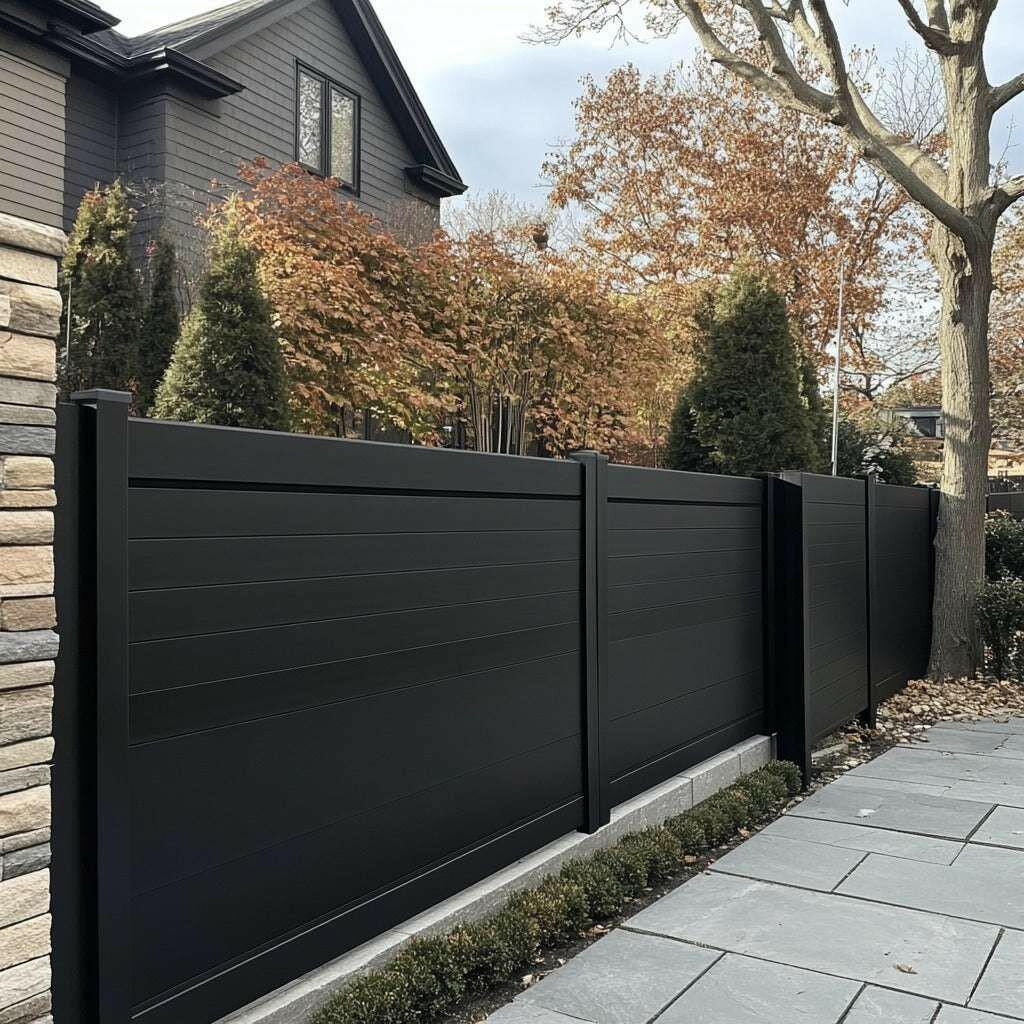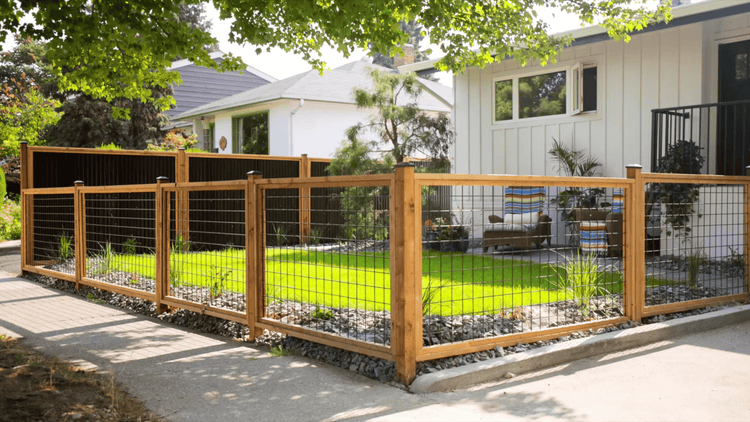Metal Match-Up: Wrought Iron vs Aluminum Fencing
TL;DR
When comparing wrought iron vs aluminum fences, wrought iron delivers unmatched strength and timeless charm—but at a higher cost and with significant maintenance needs. Aluminum offers a cost-effective, rust-resistant alternative that mimics wrought iron’s beauty without the upkeep. The right choice depends on your budget, maintenance tolerance, and aesthetic goals.
Jump To:
Introduction
Choosing between wrought iron and aluminum fencing goes far beyond comparing price tags. Both materials are known for their strength and sophistication, yet their costs, maintenance, and long-term value differ dramatically. As a trusted North American metal fence manufacturer, BarrierBoss helps property owners make informed decisions about which fence material best suits their needs—balancing performance, budget, and design goals.
While wrought iron represents traditional craftsmanship and sheer strength, aluminum showcases modern engineering with corrosion resistance and ease of upkeep. Let’s dive into a complete comparison of wrought iron vs aluminum fencing so you can choose confidently.
Quick Comparison: Wrought Iron vs Aluminum Fence
| Feature | Wrought Iron Fence | Aluminum Fence |
|---|---|---|
| Initial Material Cost | Higher ($30–50 per linear foot) | Lower ($25–40 per linear foot) |
| Installation Cost | Very High ($20–30 per linear foot) | Moderate ($15–20 per linear foot) |
| Maintenance | High (regular painting & rust prevention) | Minimal (occasional cleaning) |
| Rust Resistance | Requires protection | Cannot rust |
| Lifespan | 50–100+ years with care | 30–50+ years |
| Strength | Superior | Strong enough for most needs |
| Best For | Historic & luxury properties | Modern homes, coastal climates |
Understanding Material Characteristics
Traditional Wrought Iron
Wrought iron is nearly pure iron with minimal carbon content, forged by skilled craftsmen into intricate designs. It’s dense, incredibly strong, and visually impressive—but also extremely heavy and prone to rust if not regularly maintained. While authentic wrought iron is rare today, most “wrought iron” fencing now uses mild steel designed to replicate the original look and feel.
Modern Aluminum Technology
Aluminum fencing has revolutionized metal barrier design. Lightweight yet strong, aluminum alloys resist rust completely while maintaining impressive structural integrity. Unlike solid wrought iron, aluminum fences use hollow extrusions that reduce weight without compromising stability. The dip-coated finish used by BarrierBoss ensures long-lasting color and weather resistance—without the flaking, chipping, or rust seen in painted or powder-coated fences.
Detailed Cost Analysis
Wrought iron typically costs 20–40% more than aluminum at the outset. Beyond higher material prices, wrought iron installation requires specialized equipment and expertise, further driving up costs. In contrast, aluminum’s lighter weight and modular assembly simplify installation and reduce labor time, leading to significant overall savings.
Over time, aluminum fencing wins the affordability race thanks to minimal maintenance—no repainting, no rust treatment, no annual service calls. In humid or coastal regions, the lifetime cost difference between aluminum and wrought iron can reach tens of thousands of dollars for the same property perimeter.
Durability and Longevity
Both materials are built to last—but under different conditions. Wrought iron excels in raw strength, offering superior impact resistance and stability. However, without frequent maintenance, rust will eventually compromise its structural integrity. Aluminum’s natural oxide layer, on the other hand, protects it from corrosion indefinitely, making it the clear winner in humid, coastal, or rainy climates.
Security and Safety Considerations
When it comes to security, wrought iron takes the top spot for brute strength. It’s nearly impossible to cut through and stands firm against physical impact. Aluminum, while lighter, still provides strong protection for residential and commercial properties. Many aluminum systems include tamper-resistant fasteners and picket spacing that meets pool and safety codes.
Aesthetic Appeal and Design Options
Visually, wrought iron remains a timeless classic—bold, traditional, and elegant. But aluminum isn’t far behind. With modern extrusion and coating technologies, aluminum fences can mimic wrought iron’s ornate detailing, from decorative finials to arched gates. The difference is in the maintenance: aluminum keeps its finish for decades with zero repainting, while wrought iron requires frequent touch-ups to maintain its beauty.
Installation and Logistics
Installing wrought iron fencing requires specialized equipment, skilled welders, and heavy lifting—often putting it beyond the reach of DIY installers. Aluminum fences, however, are designed for efficiency. Pre-assembled panels, lightweight sections, and standard hardware make installation faster, easier, and more cost-effective.
Environmental Impact and Sustainability
Both metals are recyclable, but aluminum carries a lower lifetime carbon footprint. Recycled aluminum requires only 5% of the energy used in primary production, and because it doesn’t rust, it remains valuable for decades. Wrought iron (and steel) recycling is also common, but frequent maintenance and coating applications make its environmental impact higher over time.
BarrierBoss: Modern Strength, Timeless Style
At BarrierBoss, we specialize in crafting durable, rust-resistant aluminum fencing that captures the look of wrought iron—without the lifetime of maintenance. Our fences are built from marine-grade aluminum alloys and finished using a premium dip-coating process that ensures color longevity and superior weather protection.
Our aluminum systems include reinforced rails, self-closing gates, and customizable styles that range from classic ornamental to contemporary minimalist. Each system is built for easy installation and long-term satisfaction. For property owners who love the traditional look of wrought iron but prefer modern performance and value, BarrierBoss aluminum fencing delivers the perfect balance.
FAQs
What is the main cost difference between wrought iron and aluminum fencing?
Wrought iron typically costs $50–80 per linear foot installed, while aluminum averages $40–60. The maintenance savings on aluminum make it significantly more affordable long term.
Which lasts longer?
Wrought iron can last 100 years or more with consistent upkeep, but aluminum delivers 30–50 years of rust-free performance with almost no maintenance.
Can aluminum look like wrought iron?
Yes. Aluminum fencing can replicate wrought iron’s classic design, offering similar profiles and decorative details with a durable dip-coated finish.
Which offers better security?
Wrought iron is stronger overall, but aluminum provides ample protection for residential and commercial properties with added corrosion resistance.
How much does annual maintenance cost?
Wrought iron requires $5–10 per linear foot annually for painting and rust prevention. Aluminum costs nearly nothing beyond occasional cleaning.
Final Thoughts
Choosing between wrought iron and aluminum fencing comes down to your priorities. Wrought iron brings prestige and permanence, while aluminum delivers practicality and peace of mind. For most modern property owners, aluminum’s balance of strength, affordability, and maintenance-free performance makes it the smart long-term investment.
Key Takeaways
- Wrought iron costs 20–40% more than aluminum and needs frequent upkeep.
- Aluminum is rust-proof, lightweight, and far easier to install.
- BarrierBoss aluminum panels are dip-coated for long-lasting, chip-resistant finishes.
- Both materials boost property value—aluminum simply does it more efficiently.
Shop the Look
Explore BarrierBoss Aluminum Fencing—crafted for strength, elegance, and zero maintenance. Discover dip-coated finishes that outperform traditional powder coatings and experience premium protection built to last.


